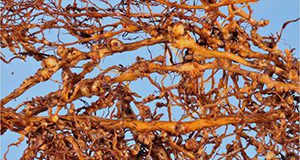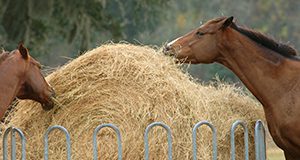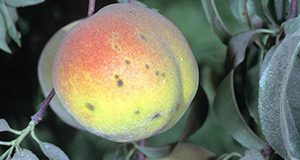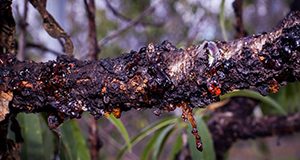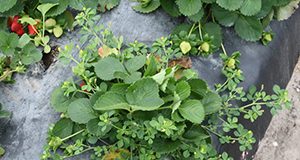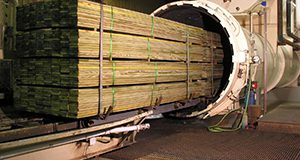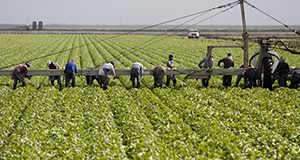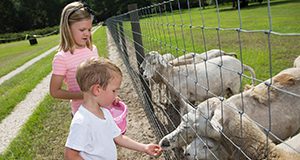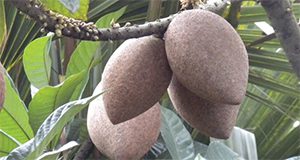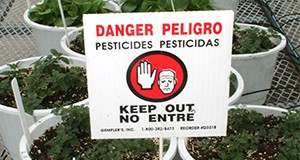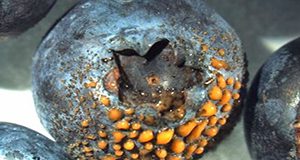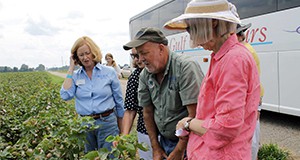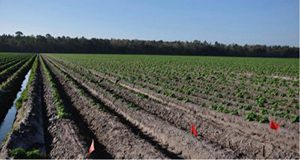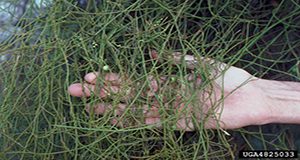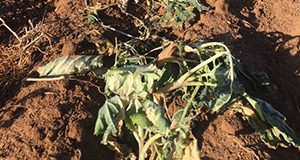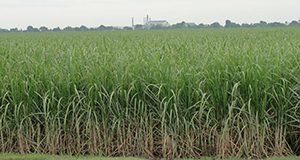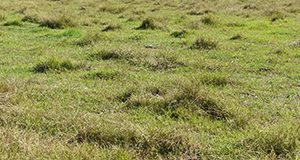One of the production issues that peach growers in Florida must contend with is plant-parasitic nematodes. One such species is the more recently discovered peach root-knot nematode, Meloidogyne floridensis, which is the subject of this 5-page publication. Written by Mary Ann D. Maquilan, Ali Sarkhosh, and Donald Dickson and published by the UF/IFAS Horticultural Sciences Department, July 2018.
http://edis.ifas.ufl.edu/hs1320
Category: Agriculture
Riesgos Comunes a Considerar Durante la Manufactura de Alimentos para Caballos
El decreto de Modernización de la Seguridad Alimentaria (FSMA por sus siglas en inglés) fue firmado en Enero del 2011. Dicho documento intenta cambiar el enfoque de la seguridad alimentaria hacia prevención en lugar de reacción ante eventos relacionados con alimentos. Determinar si un peligro requiere un control preventivo depende de la frecuencia y la gravedad del peligro, el cual varía de acuerdo a la instalación y la especie alimentada. This 5-page fact sheet is the Spanish version of EDIS document AN344, Common Hazards to Consider During Manufacturing of Feeds for Horses. Written by Ana Margarita Arias, Taylor N. Langford, Carissa Wickens, Lori Warren, and Jason M. Scheffler, and published by the UF/IFAS Department of Animal Sciences, July 2018.
http://edis.ifas.ufl.edu/an345
Peach Rust (Transchelia spp.)
Peach rust is a fungal disease that attacks plants like peach, nectarine, almond, plum, apricot, and cherry. Infections can be particularly severe in warm weather with high rainfall, so Florida summers provide favorable conditions for peach rust development. This 6-page document describes the characteristics and management of peach rust. Written by Daniel Mancero-Castillo, Ali Sarkhosh, Courtney Ligon, Mercy Olmstead, and Philip Harmon and published by the UF/IFAS Horticultural Sciences Department, July 2018.
https://edis.ifas.ufl.edu/hs1263
Fungal Gummosis in Peach
Peach fungal gummosis (PFG) is a vascular disease that limits the growth and yield of peach orchards in the southeastern United States. This 6-page document discusses the symptoms and management of PFG. Written by Daniel Mancero-Castillo, Ali Sarkhosh, Sara Sherman, Mercy Olmstead, Philip Harmon, and Thomas Beckham and published by the UF/IFAS Horticultural Sciences Department, July 2018.
https://edis.ifas.ufl.edu/hs1265
Control of Black Medic in Strawberry Production
Black medic is an annual broadleaf weed that competes with strawberry crops and impedes harvest. This 4-page document describes how to manage black medic in strawberry production. Written by Shaun M. Sharpe and Nathan S. Boyd and published by the UF/IFAS Horticultural Sciences Department, July 2018.
https://edis.ifas.ufl.edu/hs1319
Wood Preservatives
This 6-page document describes the purpose of applying preservatives to various wood products. A description of wood preservatives registered for use in Florida is also provided. Written by Frederick M. Fishel and published by the UF/IFAS Agronomy Department, July 2018.
https://edis.ifas.ufl.edu/pi276
The Migration Pattern of Florida Seasonal Farmworkers
This 4-page fact sheet written by Zhengfei Guan, Berdikul Qushim, Feng Wu, and Alicia Whidden and published by the UF/IFAS Food and Resource Economics Department investigates the migration pattern of seasonal farmworkers based on a survey of strawberry harvesters conducted in 2016. In the survey, we asked workers where they were working and what crops they were working on before their current jobs. We also asked where they would migrate and what crops they would be working on after the strawberry harvest. We found that most workers were from Florida, Michigan, North Carolina, and California in that order, and that similar percentages of workers would migrate to these states after the job. Blueberries, tomatoes, and apples were the top three crops they were working on before and after their current jobs.
http://edis.ifas.ufl.edu/fe1040
Helping Agritourism Visitors Learn During Their Visits
Agritourism is a growing industry in Florida, and combines two of the state’s major assets: tourism and agriculture. This 4-page document outlines ways that agritourism operators can incorporate meaningful educational opportunities into their operation. Written by Kathryn Stofer and Joy N. Rumble and published by the UF/IFAS Department of Agricultural Education and Communication, June 2018.
http://edis.ifas.ufl.edu/wc308
Cost and Return Estimates of a Mamey Sapote Grove in South Florida, 2017
The objective of this 6-page fact sheet written by Fredy H. Ballen, Aditya Singh, Edward A. Evans, and Jonathan Crane and published by the UF/IFAS Food and Resource Economics Department is to provide an estimate of the costs and returns associated with an established mamey sapote orchard in south Florida.
http://edis.ifas.ufl.edu/fe1039
Selecting Educational Resources
Many instructors struggle to find appropriate educational resources. However, collaborative teaching and learning efforts have created a number of educational resources that can be stored, shared, adapted, and used within the agricultural education profession. This 7-page document will help educators in selecting educational resources. Written by Tyler D’Angelo, Deb Barry, J. C. Bunch, and Andrew Thoron and published by the UF/IFAS Department of Agricultural Education and Communication, June 2018.
http://edis.ifas.ufl.edu/wc303
Common Hazards to Consider During Manufacturing of Feeds for Horses
Horses are uniquely sensitive to fumonisin and ionophores compared to other livestock species. Facilities, particularly mixed-species feed facilities, need to ensure CGMPs, SOPs, and possibly preventive controls are implemented to address those concerns in addition to more general hazards. This 5-page fact sheet discusses common biological, chemical, and physical hazards in horse feeds as well as methods of prevention. Written by Jason M. Scheffler, Taylor N. Langford, Carissa Wickens, and Lori Warren, and published by the UF/IFAS Department of Animal Sciences, June 2018.
http://edis.ifas.ufl.edu/an344
Specifically Regulated Pesticides in Florida-Bromacil
Bromacil is a general use pesticide that is marketed in Florida under many names and is used on sites such as citrus, pineapple, and industrial areas. This 2-page document discusses the characteristics and use of bromacil. Written by Frederick M. Fishel and published by the UF/IFAS Agronomy Department, May 2018.
http://edis.ifas.ufl.edu/pi112
Anthracnose on Southern Highbush Blueberry
Information contained in this 4-page publication is intended for Florida blueberry growers to use as a guide in the identification of anthracnose, a group of fungal pathogens that affects a wide range of plants, including southern highbush blueberries (SHB). Written by Douglas A. Phillips, Maria C. Velez-Climent, Philip F. Harmon, and Patricio R. Munoz and published by the UF/IFAS Plant Pathology Department, May 2018.
http://edis.ifas.ufl.edu/pp337
Selecting the Right Type of Educational Experience for Your Agritourism Operation
Agritourism has become a way for consumers to experience agriculture and for the industry to increase agricultural awareness. This 4-page document will help guide you toward selecting the right type of educational experience for your agritourism operation. Written by Joy N. Rumble, Kathryn Stofer, and Hoda Manafian Ghahfarokhi and published by the UF/IFAS Department of Agricultural Education and Communication, May 2018.
http://edis.ifas.ufl.edu/wc304
Seed Piece Spacing Adjustment for Florida Chipping Potato
Seed spacing directly affects crop revenue because the number of potato seeds planted determines the final plant population density. The analysis presented in this 5-page publication was extracted from a series of field trials that looked at improved potato plant arrangement in the field by adjusting seed piece spacing for Florida growing conditions. Written by Fernanda Souza Krupek, Steven A. Sargent, Peter J. Dittmar, and Lincoln Zotarelli and published by the UF/IFAS Horticultural Sciences Department, May 2018.
http://edis.ifas.ufl.edu/hs1317
Biology and Management of Dodder (Cuscuta spp.) in Ornamental Crop Production and Landscape
Dodder are a group of over 150 species in the genus Cuscuta. This 4-page publication was developed to help commercial growers, landscape professionals, and homeowners identify and manage dodder infestations in their greenhouses, nurseries, or landscapes. Written by Kaley Mierek, Chris Marble, Nathan Boyd, and Shawn Steed and published by the UF/IFAS Environmental Horticulture Department, May 2018.
http://edis.ifas.ufl.edu/ep556
Frost Damage of Carinata Grown in the Southeastern US
Brassica carinata is an annual oilseed crop used for the commercial production of jet fuel. One of the challenges to commercialization of this crop in the southeastern United States has been frost damage. This 4-page fact sheet discusses symptomology and ways to minimize risk of frost damage to carinata. Written by Michael J. Mulvaney, Ramdeo Seepaul, Ian Small, David Wright, Silvana Paula-Moraes, Carl Crozier, Paul Cockson, Brian Whipker, and Ramon Leon, and published by the UF/IFAS Agronomy Department, May 2018.
http://edis.ifas.ufl.edu/ag420
Florida Crop/Pest Profile: Sugarcane
Sugarcane (Saccharum interspecific hybrids) is the main source of sugar in the world. It is grown in more than 90 countries in tropical and subtropical regions. Cultivation techniques and production challenges vary by location (Rott 2017; Rott 2018). This 19-page document discusses characteristics of the sugarcane crop and pests affecting its production in Florida, which is the largest producer of sugarcane in the United States. Written by P. Rott, D. C. Odero, J. M. Beuzelin, R. N. Raid, M. VanWeelden, S. Swanson, and M. Mossler, and published by the UF/IFAS Agronomy Department, revised May 2018.
http://edis.ifas.ufl.edu/pi207
Marking First Thinnings in Pine Plantations: Potential for Increased Economic Returns
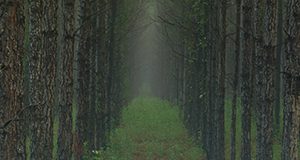
This 3-page fact sheet written by Byron Love, Michael Andreu, and Chris Demers and published by the UF/IFAS School of Forest Resources and Conservation summarizes a study to determine whether landowners may gain increased economic returns if they mark the first thinning in a southern pine stand. The study found that marking can indeed bring higher revenue at final harvest. The greater number of high-quality and faster-growing trees remaining after a marked thinning is the main reason for immediate and future increases in value.
http://edis.ifas.ufl.edu/fr410
Brunswickgrass or Paspalum nicorae: A Weed Contaminant in Southern Pastures and Bahiagrass Seed Production Fields
Brunswickgrass (Paspalum nicorae Parodi) is becoming a problematic weed in summer perennial grass pastures in the Southeast. The plant is competitive with bahiagrass
and bermudagrass. Since it is less palatable, it can eventually dominate a perennial grass pasture. Brunswickgrass has become naturalized and has reportedly contaminated bahiagrass seed fields and pastures in the southeastern states, including some of the important counties for seed production in Florida, such as Gilchrist, Levy, Alachua, Citrus, and Sumter. This 4-page fact sheet provides an overview of brunswickgrass and discusses its appearance, variety/germplasm, and management. Written by Ann Blount, Marcelo Wallau, Brent Sellers, Dennis Hancock, Leanne Dillard, Jose Dubeux, Cheryl Mackowiak, Joao Vendramini, and Clay Cooper, and published by the UF/IFAS Agronomy Department, April 2018.
http://edis.ifas.ufl.edu/ag408
